Drywall Finish Levels
At Five Star Painting Loudoun, we often receive requests from customers to paint their garage. Some of these customers expect their finished garage walls to look like their dining room. This is possible to do, but a simple primer and new paint coat alone isn’t enough. Garage walls have a lower drywall finish than interior rooms, essentially meaning they have fewer layers of drywall mud, or joint compound, on their walls than the ones inside the house. General contractors and home builders typically spend less time prepping the walls for finishing in a garage than inside a home. Directly applying a new paint coat on garage walls without increasing the drywall level first would then yield results that do not look as good as the walls inside the house.
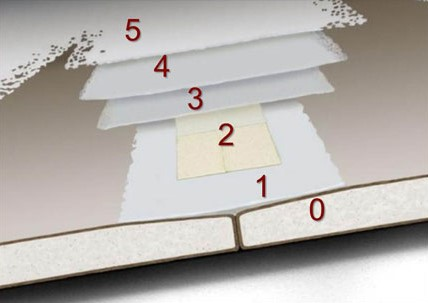
Drywall Finish Levels
The gypsum industry and drywall professionals set six levels of drywall finish that serve different purposes.
Level 0
No finish or taping applied. Drywall is hung to the walls or ceiling. Level 0 is used for temporary construction or when the final decoration is undetermined.
Level 1
One layer of joint compound and paper taping is applied. Ridges and tool marks are common on this finish. Level 1 is used in attics or the plenum space above the ceilings at an office.
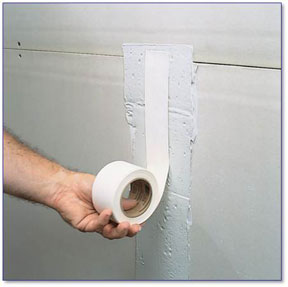
Level 2
A thin, second layer of joint compound is covered over the taping. Fastener heads and corner beads are covered, and excess mud is wiped off. Level 2 is used in areas where the appearance is not important. This is the level of drywall finish usually found in your garage.
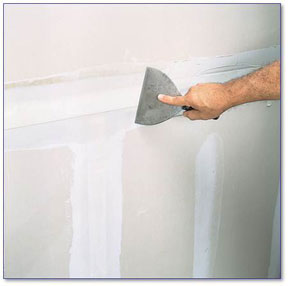
Level 3
An additional layer of joint compound is applied over tape and screws. The compound should be free of ridges and tool marks. Primer may be applied if needed. Level 3 is used when medium to heavy texture wall covering is determined as the final decoration.
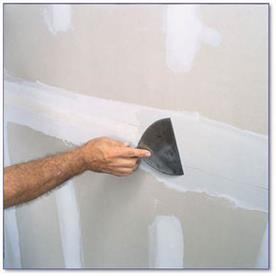
Level 4
Two coats of joint compound are spread over flat joints, a separate coat covers interior angles, three coats are applied to fastener heads and accessories, and sanded once dry. Level 4 is used with light texture or no texture walls. This is likely the finish used for most of your interior walls. Primer is painted on before the final decoration. The best paint for walls at this level is flat because it will hide almost all imperfections. A satin finish may show some imperfections, but can still be an acceptable choice of finish. This level is not recommended for semi-gloss or gloss paints because wall imperfections are highlighted from light reflections off the coat.
Level 5
The highest level. Follows the same requirements for a level 4, but adds a thin skim coat of compound over the entire surface. The skim coat prevents joint imperfections and fasteners bleeding through most final finishes. Primer is a must. Level 5 is used for semi-gloss, gloss, enamel, and non-textured flat paint finishes or in areas exposed to abundant sunlight.
Garage Painting
As mentioned, the drywall in your garage likely has a Level 2 finish. Painting directly over that will expose the taping and screws in the wall. Most customers find this acceptable since it’s the garage and they are just looking to clean up the look by making everything the same color. However, on occasion, a customer desires or expects a much more polished finish before painting. In order for those walls to match living room standards, the requirements for a Level 3, 4, or 5 finish, depending on your desired final decoration, must be implemented first before the final painting.
Building up the drywall in your garage can take up to several days to complete. The compound applied to smooth the walls has to dry appropriately before another layer is applied, or is painted over. Below is a graph that displays the estimated drying time for joint compound in relation to the temperature and humidity. A hot and dry climate will dry it the quickest. Depending on these factors, we schedule a time to return and apply the paint coats.
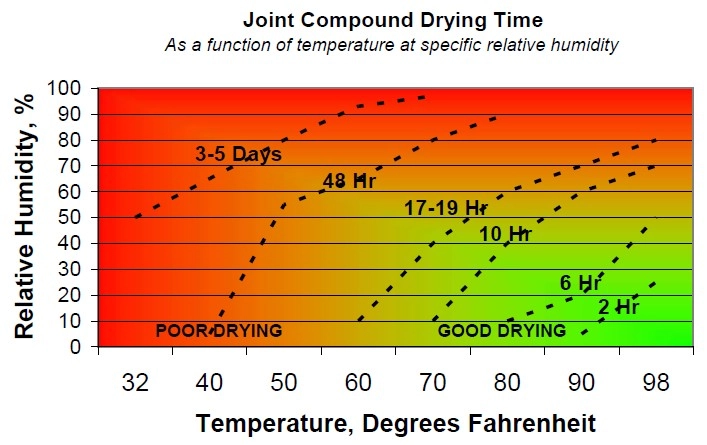
In accordance with the time involved to raise the level of drywall finish, the cost also rises. Customers should be aware of that when deciding what they envision when their garage is painted. Having clear expectations with your contractor will allow them to quote you an appropriate price and explain to you the preparation that will be involved to achieve the results desired. This will help prevent any frustrations for both the homeowner and the contractor.
What do you want out of your garage? Tell us about your garage goals the comments below!
Editor’s Note: This post was originally published in March 2014 and has been updated to improve content for our readers.
 Click to call
Click to call




